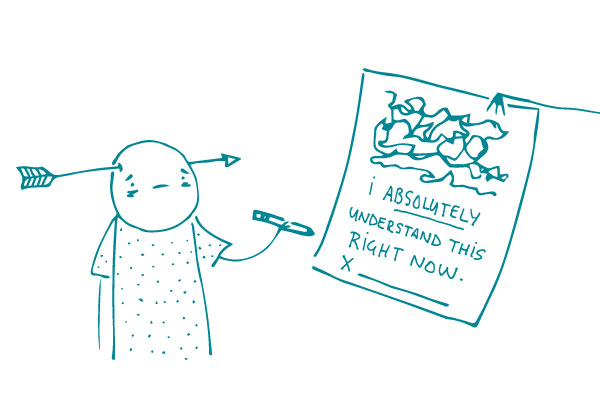Neutral Citation Number: [2021] EWCA Civ 448
Re H-N and Others (children) (domestic abuse: finding of fact hearings)
This is a post by Sarah Phillimore. This is a useful judgment setting out comprehensively and clearly the historical evolution of the family court approach to issues of domestic abuse and offering useful pointers for how such cases should be handled. It recognises that every appeal in such cases represents a failure but does not accept wider criticisms of a systemic refusal or inability of the family court system to tackle allegations of abuse. However, the massive, trumpeting elephant in the room remains the tensions between the need to see relationships more of ‘patterns’ than discrete incidents and the inevitability that such investigation will take time that the family court system just doesn’t have.
On the 30th March 2021 the Court of Appeal handed down its judgment in four conjoined appeals. A number of intervenors were involved, including the Association of Lawyers for Children and Families Need Fathers. The first 77 paragraphs deal with some general guidance on two very important issues.
- where domestic abuse is alleged in children cases, should the focus be on patterns of behaviour rather than specific incidents?
- What extent should the family courts be taking into account concepts which are applicable in criminal proceedings?
The rest of the judgment looks at the individual appeals. While guidance from the Court of Appeal is always welcome, the court recognises at the outset its limitations. Not only are there various initiatives already in train but there is a clear limit to what any court can say about issues which do not strictly arise from the appeals before it.
Domestic Abuse in the Family Courts
This is sadly a common issue. A ‘guesstimate’ is that of the 55,253 ‘private law’ children applications made in 2019/2020, 40% involved allegations of domestic abuse. It is important that the court consider the impact of the abuse on the parents and child and may restrict or even close down, any continuing relationship between the abusive parent and the child. If one parent does not accept the allegations of the other, the family court as a civil court, may conduct a ‘finding of fact hearing’ to determine what did or didn’t happen. The burden of proof is on the person making the allegations and the standard of proof is the ordinary civil standard ‘on the balance of probabilities’ . If the court does not find that an allegation is true then it is treated as if it didn’t happen.
Cases are heard by the 2,744 lay magistrates and 1,582 salaried judges, along with some part time judges. Making decisions in such cases is clearly a significant responsibility – get it wrong and either an abusive parent is allowed free reign to continue abusing, or a blameless parent may lose their relationship with their child. The cases can be very difficult – the evidence is often not clear and may turn on the word of one parent against the other. The decision about having a finding of fact hearing and what allegations it should deal with is clearly very important and needs to be made at an early stage. Not every case will need such a hearing.
Developing understanding of issues around domestic abuse
The family courts approach to issues of domestic abuse have evolved as society’s attitudes have shifted – although some say its far too little and too slowly. But the attitudes of decades ago, where domestic abuse was seen as either trivial or a private matter, are long gone. There have been various shifts in attitude over the years. The Court of Appeal noted the ‘seminal moment’ to the court’s approach to ‘domestic violence’ (as it was still called) was the Court of Appeal judgment in another conjoined hearing of four appeals – Re L (Contact: Domestic Violence); Re V (Contact: Domestic Violence); Re M (Contact: Domestic Violence); Re H (Contact: Domestic Violence) [2000] 2 FCR 404; [2000] 2 FLR 334. The court heard from expert child psychiatrists who emphasised the need for greater awareness of the existence of and the consequences for children of, exposure to ‘domestic violence’ between parents and other partners.
Further initiatives were developed to improve the ways the courts handling of such cases, one being Family Proceedings Rule 2010: Practice Direction 12J- Child Arrangements and Contact Orders: Domestic Abuse and Harm (‘PD12J’) which was originally implemented in 2008. PD12J sets out a step by step guide over 40 paragraphs about what the court MUST do in cases where there is reason to believe that one party has perpetrated abuse or there is a risk this might happen.
Even wider initiatives are afoot – the Ministry of Justice is moving to implement their report: Assessing Risk of Harm to Children and Parents in Private Law Children Cases: (‘The Harm Panel Report’). At the same time, the Domestic Abuse Bill is before Parliament. In addition the President of the Family Division’s ‘Private Law Working Group’ (‘PLWG’) punished its second report in April 2020. The Harm Panel Report wishes to implement a more ‘investigative and problem solving’ approach to domestic abuse in the courts, rather than allow the current adversarial system to continue – pilots of Integrated Domestic Abuse Courts (IDAC) are being designed. The success or otherwise of such initiatives are clearly beyond the scope of any court judgment to examine, so the Court of Appeal restricted itself to general guidance about the current court processes.
General guidance relating to the current court process
The number of appeals against decisions in these cases are low but the Court of Appeal warns against complacency. When the stakes are so high, even a small amount of cases going wrong can cause deep unease and the public rightly seek to hold the Family Justice System to account when it fails.
While I take on board the significant developments in improved practice and procedure over the last 50 years, there is an immediate and angry elephant in the room which this appeal hearing illustrated starkly. Legal aid was removed in 2012 from private law cases, unless a ‘domestic violence’ exemption can be proven. That meant each of the mothers/appellants had the benefit of public funding whereas each father had to find solicitors and barristers willing to work for free. The Court of Appeal was of course grateful that this was done, but no court system can run on gratitude. There ought to be ‘equality of arms’ in these proceedings.
Increased awareness of ‘patterns of behaviour’.
The definition of ‘abuse’ was expanded in 2017. PD12J paragraph 3 reflects the need to move away from characterising domestic abuse as separate incidents of violence, but looking more to patterns of acts and incidents, including incidents of controlling, coercive or threatening behaviour which can be demonstrated by psychological, physical, sexual, financial, or emotional abuse. Domestic abuse also includes culturally specific forms of abuse including, but not limited to, forced marriage, honour-based violence, dowry-related abuse and transnational marriage abandonment. We have come a long way from the 1970s and the focus on ‘violence’ only. No one argued before the court that this definition of ‘abuse’ should change and the Court of Appeal concluded therefore that it was fit for purpose. Although the structure of the definition of ‘domestic abuse’ in clause 1 of the Domestic Abuse Bill [‘DAB’] currently before Parliament differs from that in PD12J, the content is substantially the same.
The Court of Appeal therefore concluded:
We are therefore of the view that PD12J is and remains, fit for the purpose for which it was designed namely to provide the courts with a structure enabling the court first to recognise all forms of domestic abuse and thereafter on how to approach such allegations when made in private law proceedings. As was also recognised by The Harm Panel, we are satisfied that the structure properly reflects modern concepts and understanding of domestic abuse
The key issue was whether the Judges ‘on the ground’ were properly implementing PD12J. Just before the Court of Appeal hearing in January 2021, Mr Justice Hayden handed down judgment in F v M [2021] EWFC 4 in a case that involved a 2 week finding of fact hearing on allegations that centred on coercive or controlling behaviour. All the parties praised this judgment for its ‘comprehensive and lucid analysis’ and agreed with the plea within it urging greater prominence to be given to coercive and controlling behaviour in the Family Court which would involve more training. The judgment was considered ‘essential’ reading for the judiciary and also highlighted paragraph 60 of the statutory guidance published by the Home Office pursuant to Section 77 (1) of the Serious Crime Act 2015 which identified paradigm behaviours of controlling and coercive behaviour. I haven’t read that and now will, so I guess my ‘awareness’ has been usefully raised.
The Court of Appeal noted that it was also necessary to be clear what was NOT sufficiently bad behaviour to count as coercive or controlling
It is equally important to be clear that not all directive, assertive, stubborn or selfish behaviour, will be ‘abuse’ in the context of proceedings concerning the welfare of a child; much will turn on the intention of the perpetrator of the alleged abuse and on the harmful impact of the behaviour. We would endorse the approach taken by Peter Jackson LJ in Re L (Relocation: Second Appeal) [2017] EWCA Civ 2121 (paragraph 61):“Few relationships lack instances of bad behaviour on the part of one or both parties at some time and it is a rare family case that does not contain complaints by one party against the other, and often complaints are made by both. Yet not all such behaviour will amount to ‘domestic abuse’, where ‘coercive behaviour’ is defined as behaviour that is ‘used to harm, punish, or frighten the victim…’ and ‘controlling behaviour’ as behaviour ‘designed to make a person subordinate…’ In cases where the alleged behaviour does not have this character it is likely to be unnecessary and disproportionate for detailed findings of fact to be made about the complaints; indeed, in such cases it will not be in the interests of the child or of justice for the court to allow itself to become another battleground for adult conflict.
What should the court do?
Once allegations of abuse are raised, the Court of Appeal identified four important questions to guide the court’s approach:
- Whether there should be a finding of fact hearing – there is detailed guidance in PD12J about this.
- The challenges presented by Scott Schedules as a means of pleading a case;
- If a fact-finding hearing is necessary and proportionate, how should an allegation of domestic abuse be approached?
- The relevance of criminal law concepts.
In essence, decisions about fact findings must be made at an early stage and any interim arrangements for contact must be safe for the child. The key words are ‘proportionality’ and ‘necessity’. We have to keep in mind the ‘overriding objective’ to deal with cases efficiently and recognise that resources are finite and need to be allocated to other cases than just our own.
As the President’s Guidance ‘The Road Ahead’ (June 2020) set out:
‘if the Family Court is to have any chance of delivering on the needs of children or adults who need protection from abuse, or of their families for a timely determination of applications, there will need to be a very radical reduction in the amount of time that the court affords to each hearing. Parties appearing before the court should expect the issues to be limited only to those which it is necessary to determine to dispose of the case, and for oral evidence or oral submissions to be cut down only to that which it is necessary for the court to hear.’
This immediately ushers in yet another angry elephants. I have never had a finding of fact hearing longer than five days in a domestic abuse case, and that was very rare. We are usually lucky if we can squeeze a handful of days out of court listing. Of course, restricting allegations to your ‘top six’ or ‘best 10’ do not enable proper investigation into coercive patterns of behaviour over many years – but unless the numbers of salaried judges expand dramatically, its difficult to see how two week findings of fact (or even two days) are going to become achievable within any realistic time frame. Therefore I am afraid I retain my usual bad tempered scepticism about the magic wand of ‘training’ . I am tolerably aware of coercive and controlling behaviour. But we need actual court time to conduct a proper hearing about such cases; they are unlikely to be able to slot into a day or two.
The Court of Appeal at para 54 did however echo my concerns
In promoting the need for courts to prioritise consideration of whether a pattern of coercive and/or controlling behaviour is established over and above the determination of any specific factual allegations, there is the potential that this additional layer of evaluation may add to an already lengthy forensic evaluative process. By example, the fact-finding hearing that had been listed in Re B-B (one of the four appeal cases before the court) was planned to last five days (that is 25 court hours) in order to consider five factual allegations.
And noted this was an important question which the Court of Appeal could not answer
How to meet the need to evaluate the existence, or otherwise, of a pattern of coercive and/or controlling behaviour without significantly increasing the scale and length of private law proceedings is therefore a most important, and not altogether straight- forward, question. It is a matter that will require consideration by others involved in working through the implications of the MOJ Harm Panel report, in implementing the Domestic Abuse Act and in any subsequent revision of revising PD12J as part of those two processes. The President will refer the anonymised skeleton arguments in these appeals to Mrs Justice Knowles (the lead judge on issues of domestic abuse) and to Mr Justice Cobb (the lead judge on private law matters) for consideration as part of that review.
Trying to spin the plates
In order to grapple with the clear tension between a fair investigation of what has actually happened in the parties relationship against the need to keep control over the length of court hearings, its clear that case management is the key. The court summarised the approach to fact findings:
- consider the nature of the allegations and the extent to which they will be relevant to making order about children.
- Keep in mind that the purpose of a finding of fact is to provide the basis for a risk assessment
- Carefully consider if its ‘necessary’ or whether there is other evidence that provides a sufficient factual basis to proceed.
- Does the fact finding need to be a separate hearing, or can it be bundled up with the final hearing?
CAFCASS made the very sensible suggestion that it would help to have more input from their officers at an earlier stage to help answer these questions and the Court of Appeal agreed this was a good idea worthy of more consideration.
Everyone agreed that Scott Schedules were useless and risked giving a false picture of what was happening in a relationship. The Court of Appeal agreed with the comments of Ms Mills QC on behalf of the second interveners, (‘Women’s Aid’, ‘Rights for Women’, ‘Rape Crisis England and Wales’ and ‘Welsh Women’s Aid’), who submitted that ‘the overwhelming majority of domestic abuse (particularly abuse perpetrated by men against women) is underpinned by coercive control and it is the overarching issue that ought to be tried first by the court. It is clear that the family court needed to move away from picking ‘your best 10’ allegations but considerations of how we move forward are limited to noting some suggestions at this time.
A number of suggestions were made by the parties in submissions including; a ‘threshold’ type document, similar to that used in public law proceedings, formal pleadings by way of particulars of claim as seen in civil proceedings and a narrative statement in prescribed form. The particular advantage of a narrative statement was, it was submitted, that it would allow there to be a focus on the overall nature of the relationship and expressly whether a party says that she had been harmed as a result of the behaviour and, if so, in what manner. Such an approach would allow the court to identify at an early stage whether an allegation of controlling and coercive behaviour is in issue. Identifying the form of harm (which may be psychological) and only then looking back at the more granular detail, would, it was submitted, allow the court to determine what specific facts need to be determined at a fact-finding hearing.
This all sounds very sensible and I hope we will see it translated into a Practice Direction soon.
The court offered the following ‘pointers’
PD12J is focused on child arrangement orders – it does not establish a free-standing jurisdiction to determine domestic abuse allegations that are not relevant to child welfare issues.
Fact finding hearings are to provide a factual basis for assessments or orders/interventions
Only allegations that are necessary for assessment purposes or particular orders should be considered
In every case where domestic abuse is alleged, both parents should be asked to describe in short terms (either in a written statement or orally at a preliminary hearing) the overall experience of being in a relationship with each other (this is an excellent idea!)
Where one or both parents assert that a pattern of coercive and/or controlling behaviour existed, and a fact-finding is necessary, that assertion should be the primary issue for determination at the fact- finding hearing. Any other, more specific, factual allegations should be selected for trial because of their potential probative relevance to the alleged pattern of behaviour, and not otherwise, unless any particular factual allegation is so serious that it justifies determination irrespective of any alleged pattern of coercive and/or controlling behaviour (a likely example being an allegation of rape).
The relevance of criminal law concepts
With regard to the last point about rape being justified as necessary allegation to determine, I maintain my concern that allegations of rape are for the criminal courts to be decided on the criminal standard of proof. The Court of Appeal said:
When considering domestic abuse, it will not infrequently be the case that the alleged behaviour will be such that it is capable both of being the subject of prosecution as an offence before the criminal courts and being the focus of consideration in the family courts as justification for the implementation of protective measures. The criminal law has developed a sophisticated and structured approach to the analysis of evidence of behaviour, to enable the criminal court to determine whether the guilt of the alleged offender has been proved to the requisite high standard. This raises the question of the degree to which the Family Court, if at all, should have regard to and deploy criminal law concepts in its own evaluation of the same or similar behaviour in the different context of Family proceedings.
The question was answered simply – it is not appropriate to use criminal law concepts in family proceedings. The two systems are fundamentally different with different aims and different standards of proof – criminal law concepts, such as the elements needed to establish guilt of a particular crime or a defence, have neither relevance nor function within a process of fact-finding in the Family Court.
The Court of Appeal commented that the authoritative statement of the law in this regard is that which is found in the judgments of McFarlane and Hickinbottom LJJ in Re R.
But I accept what the Court of Appeal says about allegations on rape in the family courts – perhaps the problem is me getting too caught up in criminal law concepts here.
Behaviour which falls short of establishing ‘rape’, for example, may nevertheless be profoundly abusive and should certainly not be ignored or met with a finding akin to ‘not guilty’ in the family context. For example in the context of the Family Court considering whether there has been a pattern of abusive behaviour, the border line as between ‘consent’ and ‘submission’ may be less significant than it would be in the criminal trial of an allegation of rape or sexual assault.
Will those who see the family courts as a misogynistic tool of oppression welcome this judgment ?
This judgment is I suspect, not going to be welcomed happily by those who would have accepted nothing less than the collective family court system falling on a massive sword and accepting its inability to recognise or deal with domestic abuse cases. The Court of Appeal rejected any suggestion that the family court system has yet to be dragged into the ‘modern approach’ but warned judges who fail to properly direct their minds:
We are confident that the modern approach that we have described is already well understood and has become embedded through training and experience in the practice of the vast majority of judges and magistrates sitting in the Family Court. Where however an issue properly arises as to whether there has been a pattern of coercive and/or controlling abusive behaviour within a family, and the determination of that issue is likely to be relevant to the assessment of the risk of future harm, a judge who fails expressly to consider the issue may be held on appeal to have fallen into error.
3 of the 4 appeals succeeded. The decisions were made on long-established principles of fairness. They do not establish any ‘new law’ nor any binding precedent. I will therefore not discuss them here, but as ever it is instructive to read and consider what went wrong and how we might avoid repeating such mistakes in future cases. Every appeal of a family court judgement represents a failure, represents avoidable pain and misery caused to adults and children. But the fact that a small percentage of judgments need to be appealed, does not mean the whole system is rotten. Any system requiring input from humans will fail at times. We have to do the best to limit those failures; it is magical thinking to expect them to be avoided entirely.
While the Court of Appeal welcomed and described the further training for Judges, such as a now mandatory free standing sexual assault awareness training programme, it did not accept that the failures under their current investigation are indicative of a systemic failure to appreciate the nature and significance of domestic abuse.







